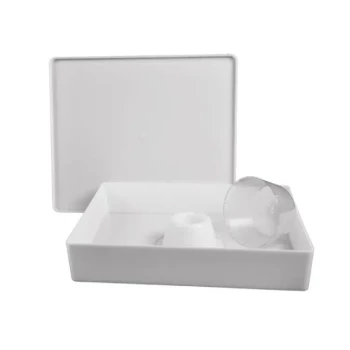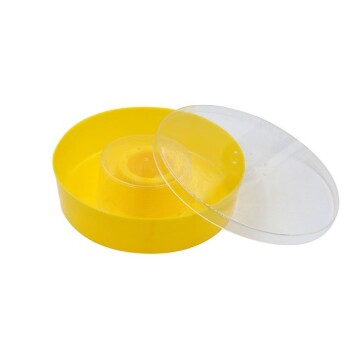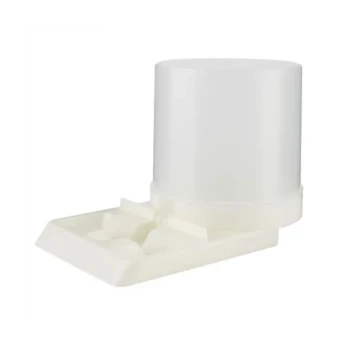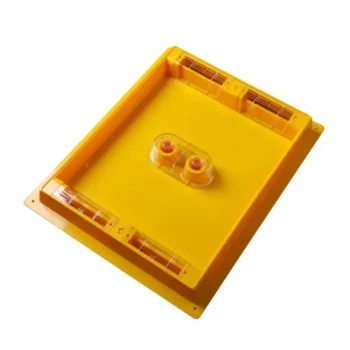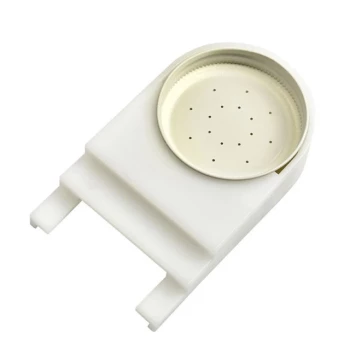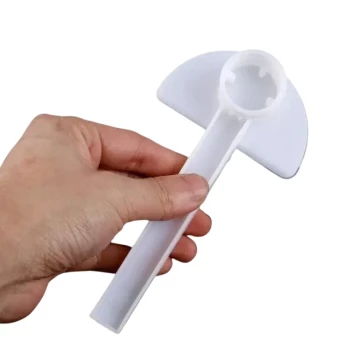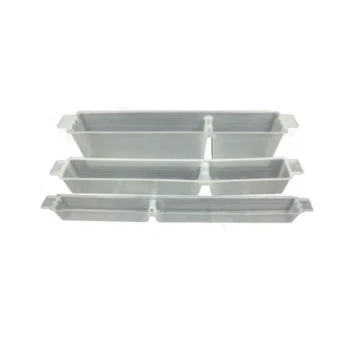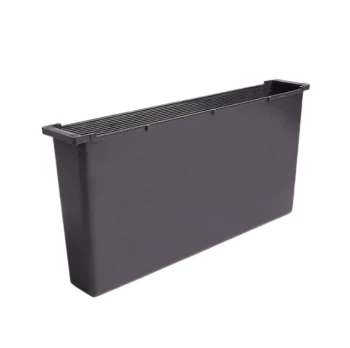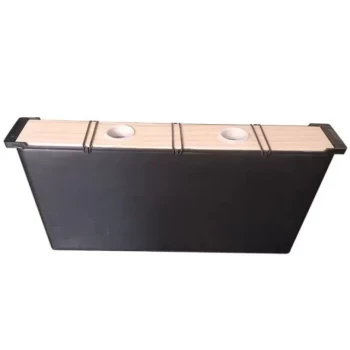The best way to feed bees depends entirely on your specific goal and the time of year. For most situations, the preferred method is closed feeding, where you provide a sugar-water syrup inside the hive using a dedicated feeder, as this protects the colony from pests and robbing by other bees. The syrup recipe changes based on whether you want to stimulate growth or help them build winter stores.
The most effective feeding strategy is not about a single "best" method, but about correctly diagnosing your colony's needs and matching them with the right type of food and the safest delivery system for the season.
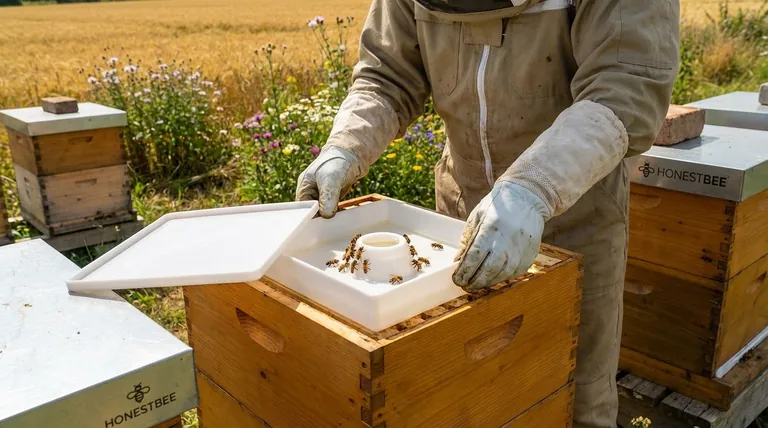
First, Determine Why You Are Feeding
Before you mix any sugar, you must understand your objective. Feeding bees is an intervention with a specific purpose, not a routine task.
For Spring Stimulation
In early spring, a light syrup encourages the queen to start laying eggs, building up the colony's population in preparation for the main nectar flow. This mimics the first blossoms of the season.
To Build Up a New Colony
Newly installed packages, captured swarms, or small nucleus colonies have a massive job to do: build wax comb. Feeding provides the necessary carbohydrates to fuel wax production and rapid expansion.
For Winter Preparation
In the fall, after the last honey harvest, colonies may be light on stores. Feeding a heavy syrup allows them to fill the brood chamber with the resources they need to survive the cold months ahead.
For Emergency Survival
If a colony is dangerously low on food, especially during a cold snap in late winter or a summer nectar dearth (a "gap" in flowering plants), feeding can be the difference between survival and starvation.
Choosing Your Feeding Method
The delivery system is just as important as the food itself. Your choice comes down to providing food inside the hive (closed) or outside (open).
Closed Feeding: The Controlled Approach
This involves placing a feeder inside the hive, making it accessible only to the colony you intend to feed. It is the safest and most common method used by beekeepers.
Types of closed feeders include hive-top feeders, which hold a large volume of syrup above the colony; entrance feeders, which use an inverted jar at the hive entrance; and in-hive frame feeders, which replace a frame inside the hive box.
Closed feeding minimizes the risk of attracting predators and prevents "robbing," where stronger nearby colonies attack and steal the food from a weaker hive.
Open Feeding: The Community Approach
Open feeding involves placing a large, open container of syrup, like a bucket or birdbath with sticks or floats for bees to land on, out in the open for any bee to access.
While simple, this method is rarely recommended. It can incite intense robbing behavior, promote the spread of diseases between different apiaries, and you have no control over which colony gets the food.
Understanding the Trade-offs and Risks
Improper feeding can cause more harm than good. Understanding the risks is critical to becoming a responsible beekeeper.
The Danger of Robbing
The smell of sugar syrup can trigger a frenzy. If syrup is spilled near the hive or an entrance feeder is not well-sealed, it can attract bees from other colonies, leading to a destructive robbing attack on your hive.
Never Feed During a Honey Flow
When natural nectar is abundant, you must stop feeding. If you continue, the bees will store the sugar syrup in the honey supers, contaminating your honey harvest with sugar water.
Avoid Feeding Another Hive's Honey
Never feed your bees honey from an unknown source, including store-bought honey. It can contain spores of devastating diseases like American Foulbrood, which can quickly destroy your colony. Only honey from your own healthy hives is safe to feed back to them.
Preparing the Correct Sugar Syrup
The recipe for bee food is simple, but the ratio of sugar to water is critical and changes with your goal. Always use plain white table sugar; avoid brown sugar or other additives that bees cannot digest.
The 1:1 Ratio (For Stimulation)
This mixture closely mimics natural nectar and is easy for bees to process. It is used to stimulate brood rearing and wax production.
To make it, mix one part sugar to one part water by volume or weight (e.g., 5 lbs of sugar to 5 pints of water).
The 2:1 Ratio (For Winter Stores)
This thick, heavy syrup requires less work for the bees to process and store as winter food.
To make it, mix two parts sugar to one part water (e.g., 10 lbs of sugar to 5 pints of water). Using hot water will help the sugar dissolve completely.
Making the Right Choice for Your Goal
Ultimately, your reason for feeding dictates your actions. Use this guide to make a clear decision.
- If your primary focus is stimulating a colony in spring or building up a new one: Use a 1:1 sugar syrup inside the hive with an entrance or frame feeder.
- If your primary focus is preparing a colony for winter in the fall: Use a 2:1 sugar syrup in a large-capacity hive-top or frame feeder to add weight quickly.
- If your primary focus is saving a starving colony: Use either syrup ratio in the most accessible internal feeder to get them immediate resources.
Thoughtful feeding is a powerful tool that, when used correctly, ensures your colonies thrive through every season.
Summary Table:
| Your Goal | Recommended Syrup Ratio | Best Feeding Method | Key Considerations |
|---|---|---|---|
| Spring Stimulation / Building a New Colony | 1:1 (Sugar:Water) | Closed Feeding (e.g., Entrance, Frame Feeder) | Mimics natural nectar; encourages brood rearing and wax production. |
| Winter Preparation | 2:1 (Sugar:Water) | Closed Feeding (e.g., Hive-Top Feeder) | Thick syrup for efficient storage; provides essential winter stores. |
| Emergency Survival | 1:1 or 2:1 | Immediate Closed Feeding | Provides quick resources to prevent starvation. |
Equip Your Apiary for Success with HONESTBEE
Effective feeding is just one part of a thriving beekeeping operation. Ensure your colonies have the right equipment to succeed. HONESTBEE supplies high-quality, durable beekeeping supplies and equipment to commercial apiaries and beekeeping equipment distributors through our wholesale-focused operations.
We understand the needs of large-scale beekeepers. Let us help you build a more efficient and productive business.
Contact HONESTBEE today to discuss your wholesale needs and discover how our equipment can support your apiary's health and growth.
Visual Guide
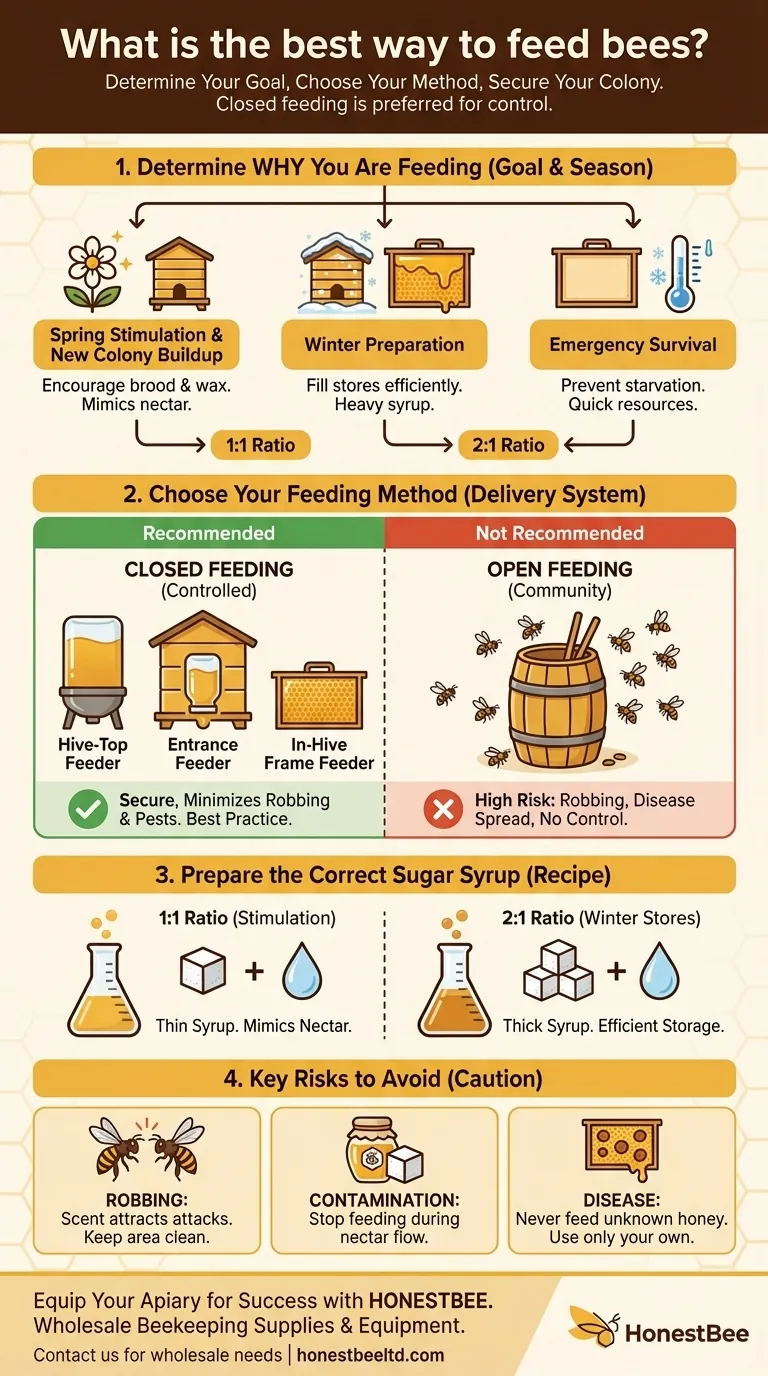
Related Products
- HONESTBEE Professional Hive Top Bee Feeder Feeding Solution
- HONESTBEE Round Hive Top Bee Feeder for Syrup
- HONESTBEE Entrance Bee Feeder Professional Hive Nutrition Solution for Beekeeping
- HONESTBEE Advanced Ergonomic Stainless Steel Hive Tool for Beekeeping
- Rapid Bee Feeder White Plastic 2L Round Top Feeder for 8 or 10-Frame Bee Hives
People Also Ask
- What features make top feeders a reliable choice for beekeepers? A Guide to Safe, Efficient Hive Nutrition
- Why is a top feeder essential for bees? Ensure Colony Health and Efficiency
- How do I keep bees from drowning in my top feeder? Ensure Safe Feeding for Your Hive
- What is the best way to top feed bees? A Safe, High-Volume Feeding Solution for Your Apiary
- What are the advantages of hive top feeders? Maximize Feeding Efficiency for Your Apiary
